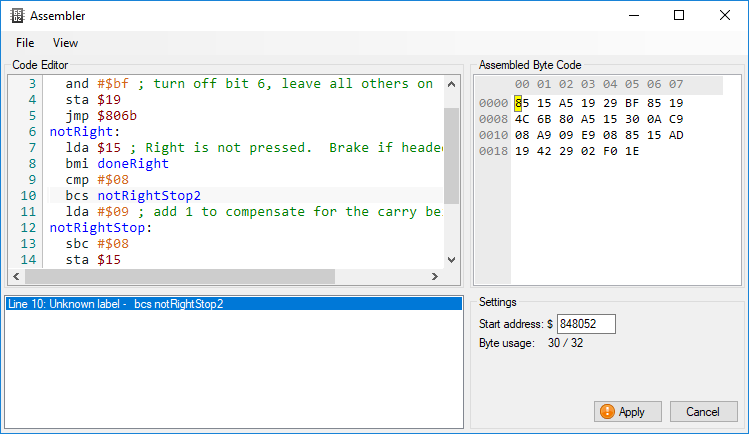Assembler
 Assembler
Assembler
The assembler allows writing new code, editing existing code and running arbitrary code. At the moment, the assembler can be used for the SNES’s main CPU, the SA-1 and the Game Boy’s CPU.
Usage
Code is assembled on-the-fly, with the resulting byte code being shown on the right.
Any compilation error will be shown in the list at the bottom – double-click an error in the list to navigate to the line that caused it.
Once you are done editing the code, click Apply to write the code to the specified memory address - this can be used to create new code in RAM, for example, or alter existing code in the ROM.
Any changes done to the ROM will remain in effect until the ROM is reloaded. If you want to save your modifications to a .sfc file, or as an IPS patch, you can use the File→Save ROM as or File→Save edits as IPS commands in the debugger window.
Note: When editing an existing block of code, the assembler keeps track of how many bytes of code the original code contained. If the new code is too large to fit into the original block of code, a warning will be shown before applying the changes.
Supported features
- All opcodes and addressing modes are supported.
- Hexadecimal ($ prefix), binary (% prefix) and decimal values can be used
- Labels can be used and defined in the code. Labels defined in the assembler are not permanent - they are discarded once the assembler is closed.
- The
.dbdirective can be used to add arbitrary data to the output.
Display Options
Syntax highlighting can be configured (or disabled) via the View menu.
It is also possible to change the font size.